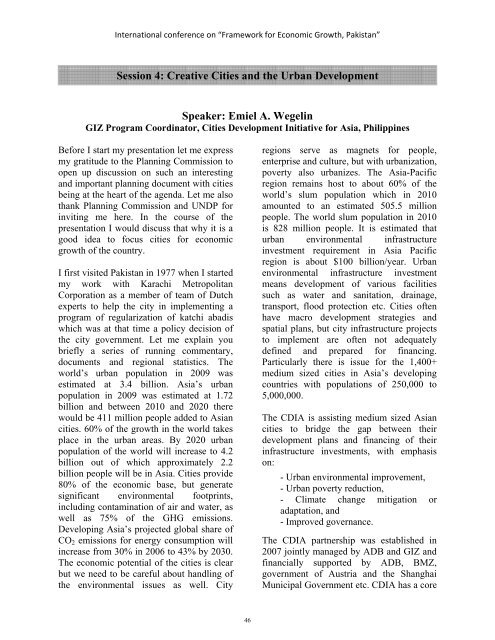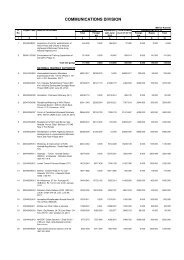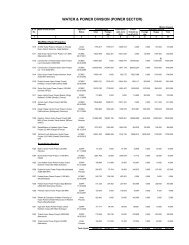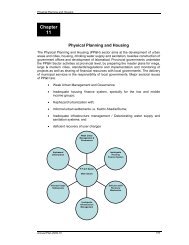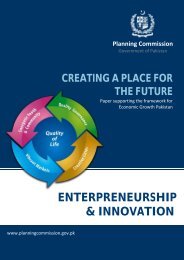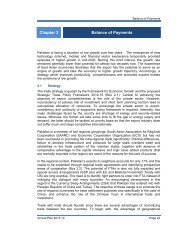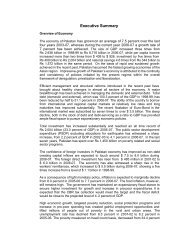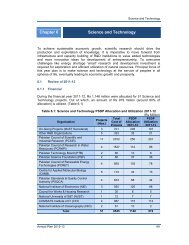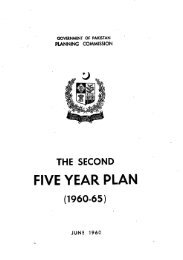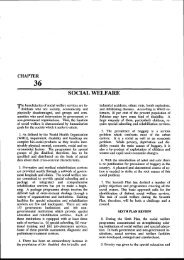Framework for Economic Growth, Pakistan - Planning Commission
Framework for Economic Growth, Pakistan - Planning Commission
Framework for Economic Growth, Pakistan - Planning Commission
Create successful ePaper yourself
Turn your PDF publications into a flip-book with our unique Google optimized e-Paper software.
International conference on “<strong>Framework</strong> <strong>for</strong> <strong>Economic</strong> <strong>Growth</strong>, <strong>Pakistan</strong>”Session 4: Creative Cities and the Urban DevelopmentSpeaker: Emiel A. WegelinGIZ Program Coordinator, Cities Development Initiative <strong>for</strong> Asia, PhilippinesBe<strong>for</strong>e I start my presentation let me expressmy gratitude to the <strong>Planning</strong> <strong>Commission</strong> toopen up discussion on such an interestingand important planning document with citiesbeing at the heart of the agenda. Let me alsothank <strong>Planning</strong> <strong>Commission</strong> and UNDP <strong>for</strong>inviting me here. In the course of thepresentation I would discuss that why it is agood idea to focus cities <strong>for</strong> economicgrowth of the country.I first visited <strong>Pakistan</strong> in 1977 when I startedmy work with Karachi MetropolitanCorporation as a member of team of Dutchexperts to help the city in implementing aprogram of regularization of katchi abadiswhich was at that time a policy decision ofthe city government. Let me explain youbriefly a series of running commentary,documents and regional statistics. Theworld’s urban population in 2009 wasestimated at 3.4 billion. Asia’s urbanpopulation in 2009 was estimated at 1.72billion and between 2010 and 2020 therewould be 411 million people added to Asiancities. 60% of the growth in the world takesplace in the urban areas. By 2020 urbanpopulation of the world will increase to 4.2billion out of which approximately 2.2billion people will be in Asia. Cities provide80% of the economic base, but generatesignificant environmental footprints,including contamination of air and water, aswell as 75% of the GHG emissions.Developing Asia’s projected global share ofCO 2 emissions <strong>for</strong> energy consumption willincrease from 30% in 2006 to 43% by 2030.The economic potential of the cities is clearbut we need to be careful about handling ofthe environmental issues as well. Cityregions serve as magnets <strong>for</strong> people,enterprise and culture, but with urbanization,poverty also urbanizes. The Asia-Pacificregion remains host to about 60% of theworld’s slum population which in 2010amounted to an estimated 505.5 millionpeople. The world slum population in 2010is 828 million people. It is estimated thaturban environmental infrastructureinvestment requirement in Asia Pacificregion is about $100 billion/year. Urbanenvironmental infrastructure investmentmeans development of various facilitiessuch as water and sanitation, drainage,transport, flood protection etc. Cities oftenhave macro development strategies andspatial plans, but city infrastructure projectsto implement are often not adequatelydefined and prepared <strong>for</strong> financing.Particularly there is issue <strong>for</strong> the 1,400+medium sized cities in Asia’s developingcountries with populations of 250,000 to5,000,000.The CDIA is assisting medium sized Asiancities to bridge the gap between theirdevelopment plans and financing of theirinfrastructure investments, with emphasison:- Urban environmental improvement,- Urban poverty reduction,- Climate change mitigation oradaptation, and- Improved governance.The CDIA partnership was established in2007 jointly managed by ADB and GIZ andfinancially supported by ADB, BMZ,government of Austria and the ShanghaiMunicipal Government etc. CDIA has a core46


